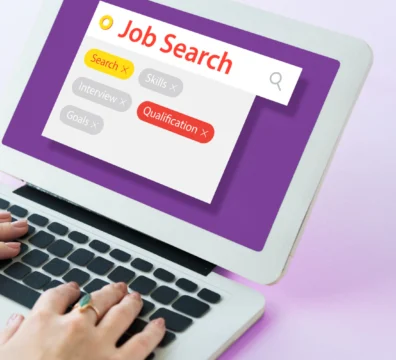So, you just finished a mammoth hiring drive and have found cream-of-the-crop candidates for the company. Now, what?
Well, now comes the most integral part of an employee’s lifecycle in the organisation: onboarding! If done well, this single step can increase employee retention by an astounding 82%.
Yes, so the role of HR in onboarding process is extremely critical and sets up the path to employee engagement, loyalty, and a positive employer brand. Want to learn more about it? Read on!
What is Onboarding?
Onboarding is a part of the human resource management (HRM) process, wherein a new employee is welcomed on board after completing the interview and accepting the offer letter.
This process will help a new recruit feel welcomed into the organisation, understand their roles and responsibilities, meet new colleagues, and learn their way around the company’s tech and processes.
The HR role in onboarding process is integral because the HR is probably the only person the new employee is familiar with; it’s like having an old friend in a new school. You can seek support when things get overwhelming without judgment.
An onboarding process can last between a few days to a few months. It is usually the time an employee takes to feel confident in their new role.
Top Onboarding Activities
Did you know that 36% of employers don’t actually have a formal onboarding process? To prevent this from happening, the role of HR in onboarding process in HRM is the key to a successful employee-employer relationship.
Here are some activities that must be performed during onboarding:
- Job offer and salary negotiations
- Paperwork processing (work visas, background verification, relieving letter from last employers, educational certificates, etc.)
- Policy framework and cultural training
- Benefits introduction (insurance, leaves, redeemable expenses, etc.)
- Tour of the premises
- Introduction to the team and senior executives
- Job training
3 Role of HR in Onboarding Process
So, let us learn how you can make a new employee feel welcome and increase the efficiency of the onboarding process for future success.
Create a Structured Plan
To determine and divide the HR onboarding roles and responsibilities among the team, you must first chalk out a detailed plan across all onboarding levels.
Here is a quick overview that you can follow and customise as per your organisational requirements:
Pre-joining
- Begin by sending a welcome email or package: it can include any company merchandise, requisition for paperwork, and information regarding the start date and dress code (if any).
- Provide the company handbook, which the employees can read to familiarise themselves with the company’s culture, objectives, and policies.
On the Joining Day
- Introduce them to the team where they are assigned.
- Assign a buddy, a colleague or a peer who can help answer their questions and familiarise them with the day-to-day activities.
- An essential part of the HR employee onboarding process includes giving a tour of the facilities either in-person or virtually (for remote workers).
First Week of Joining
- During the first week after joining, HR should have regular check-ins, which can help sort out any teething problems that they might face.
- An important role of HR in onboarding process during the first few days is providing access to training, tools, and resources that the new employee will require to discharge their responsibilities efficiently.
3 Months Since Joining
Most companies have a probationary period of three months during which the employee’s performance is closely monitored by the HR, reporting manager, and senior management. This is done to check whether the new hire has successfully adapted to the work and company’s culture.
During this phase, the role of HR in onboarding process is to have regular check-ins, provide feedbacks, and offer guidance.
One Year Since Joining
The new employee is no longer new, and you have completed the HR employee onboarding process. You will be responsible for conducting performance reviews or appraisals, providing constructive feedback, and finally, discussing the employee’s future company goals with them.
Add Tools to Streamline The Onboarding Process
The role of HR in onboarding process is extensive, and it can get extremely tedious to manage it manually. You can opt for various tools to help you bring efficiency and effectiveness to the entire system.
Some tools that can be used for HR employee onboarding process are:
HR Management Systems
It is a centralised dashboard that enables the storage of employee data, tracking of the onboarding process, and automating any manual tasks. This will ensure all the paperwork is updated and the company remains compliant with local labour laws and regulations.
Project Management Tools
With so many small steps involved in onboarding, it is difficult to keep track of it all. A project management tool makes the role of HR in onboarding process much easier. It will help delegate tasks, create checklists, schedule tasks, and monitor progress.
Learning Management System (LMS)
Knowledge transfer is essential during the onboarding, as it will allow the new employee to work optimally and contribute towards the company’s success. LMS will allow your colleagues to create training modules and assessments.
Communication Software
Whether you have in-person onboarding or virtually, communication tools like Slack, Teams, Skype, or Meet come in very handy. It allows seamless collaboration between colleagues, private check-ins, and real-time feedback.
Introduce the Company’s Culture Early On
For an employee to contribute positively towards the company’s overall growth while also feeling satisfied and engaged, they must understand and respect the company’s culture.
It is the role of HR in onboarding process to introduce them to this. You can do this in the following manner:
- Provide a welcome package comprising company merchandise, a letter from the founder or CEO, and an employee handbook.
- The employee handbook should contain all the details pertaining to your DEI initiatives, sexual harassment and anti-discrimination policies, and any other important details.
- Create a buddy program where a peer can help them become familiar with the company and the team.
Other role of HR in Onboarding Process
Apart from the orientation and paperwork, HR also ensures that the new employee has access to
- Role-specific training
- Compliance and regulatory training
- Finance setup (opening bank accounts, tax accounts, etc.)
How 6 Pence Helps
The role of HR in onboarding can help set the tone for an employee’s time in the organisation. HR managers are like the captain of the onboarding ship, but with so many minute and integral tasks to be performed, while also managing other operation activities, it can feel overwhelming.
That’s where 6 Pence can help. We not only assist with staffing and recruitment but also provide job-related training to new hires, payroll processing, paperwork verification, and even work visas. This empowers our business partners to not only offer an exclusive, highly satisfying, and seamless onboarding experience but also better optimise their daily operations.
To learn more, connect with us today!
Frequently Asked Questions
What is the role of HR in onboarding?
The HR plays an all-encompassing role during the onboarding process. They will oversee the completion of the necessary paperwork, provide introduction with the team, orientation, and also ongoing support.
What are the onboarding stages in HR?
Usually, there are 5 stages in the onboarding process:
- Pre-joining
- Orientation
- Training
- Transition to full-time role
- Evaluation
How can HR improve onboarding?
An HR can improve onboarding by following the below-mentioned steps:
- Personalising the process
- Asking the new hire for feedback
- Preparing onboarding resources
- Educating managers about onboarding processes and orientations




































































































